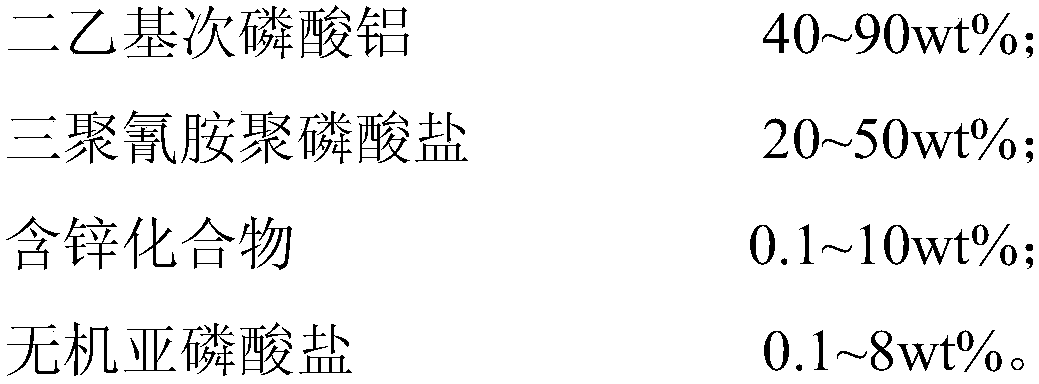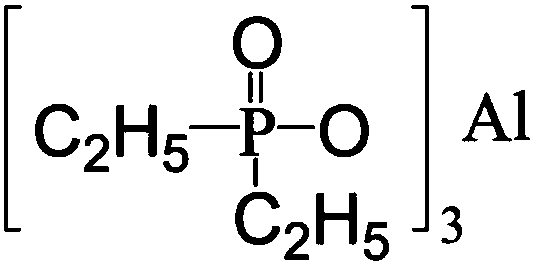Phosphorus-nitrogen halogen-free flame retardant composition capable of improving thermal stability by utilizing inorganic metal phosphite and application of phosphorus-nitrogen halogen-free flame retardant composition
A phosphite and thermal stability technology, applied in the field of flame retardants, can solve problems such as degradation, inability to use, and corrosion, and achieve excellent performance
- Summary
- Abstract
- Description
- Claims
- Application Information
AI Technical Summary
Problems solved by technology
Method used
Image
Examples
Embodiment 1
[0058] The compound flame retardant system is applied to glass fiber reinforced engineering plastics, and the performance of the flame retardant is investigated according to the following steps and test methods.
[0059] 1. Mixing of halogen-free flame retardant system
[0060] Add the components of the compound flame retardant system and other additives that have been weighed in advance according to the ratio into the high-speed mixer, start high-speed stirring, and stir for 10 minutes to complete the compounding of the halogen-free flame retardant system and discharge.
[0061] 2. Extrusion and granulation of materials
[0062] Set the temperature of each zone of the twin-screw extruder at the predetermined temperature. After the temperature is stable for 20 minutes, add the polymer matrix from the hopper, add the glass fiber through the glass fiber inlet, and feed the flame retardant powder through the powder feeding hole, start the host And feeder to complete the extrusio...
Embodiment 2
[0077] The implementation process is the same as in Example 1, except for adjusting the amount of aluminum phosphite, see Table 1 for other materials and proportioning, and see Table 1 for the obtained material results.
Embodiment 3
[0079] The implementation process is the same as in Example 1, except for adjusting the amount of aluminum phosphite, see Table 1 for other materials and proportioning, and see Table 1 for the obtained material results.
PUM
| Property | Measurement | Unit |
|---|---|---|
| particle size | aaaaa | aaaaa |
Abstract
Description
Claims
Application Information
 Login to View More
Login to View More - R&D
- Intellectual Property
- Life Sciences
- Materials
- Tech Scout
- Unparalleled Data Quality
- Higher Quality Content
- 60% Fewer Hallucinations
Browse by: Latest US Patents, China's latest patents, Technical Efficacy Thesaurus, Application Domain, Technology Topic, Popular Technical Reports.
© 2025 PatSnap. All rights reserved.Legal|Privacy policy|Modern Slavery Act Transparency Statement|Sitemap|About US| Contact US: help@patsnap.com



